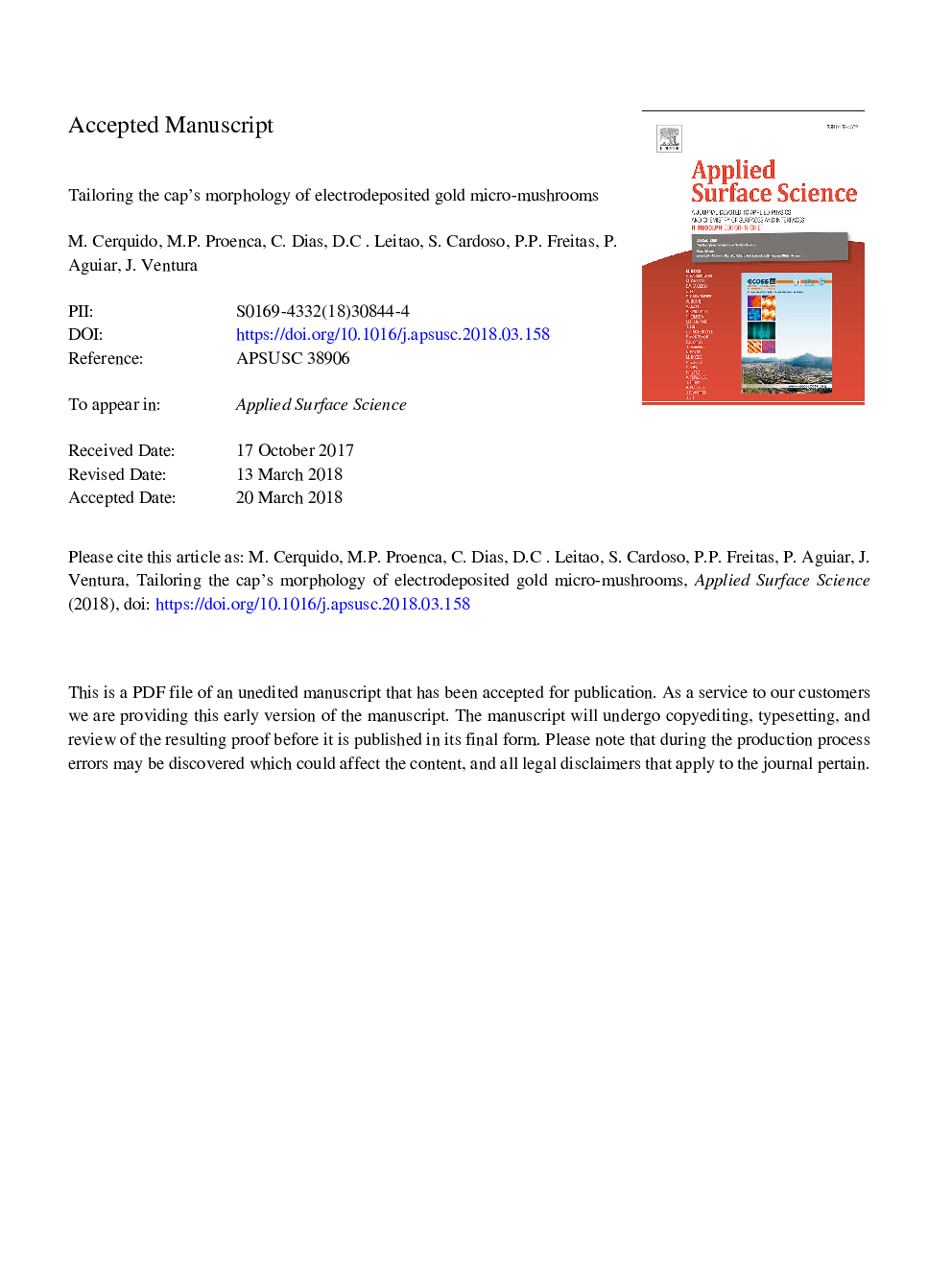| Article ID | Journal | Published Year | Pages | File Type |
|---|---|---|---|---|
| 7834341 | Applied Surface Science | 2018 | 28 Pages |
Abstract
Ordered arrays of gold micro-mushrooms were electrodeposited inside lithographically patterned micro-pores with around 2μm in diameter and 1μm in depth. By using a commercial electrolytic gold bath and adjusting the deposition time (3-30â¯min) and potential (â0.8 to â1.3â¯V), one was able to tune the mushrooms' morphology. Flattened caps with large grain sizes were obtained at lower potentials and short depositions; rounded caps with smaller grains occurred at â1.0â¯V and longer depositions; and umbilicated caps with smoother surfaces appeared at â1.3â¯V. The formation of a central depression at the latter structures was ascribed to the abundant hydrogen evolution during the deposition process and to the non-uniform current density profile across the micropore. Aiming to fabricate perfectly hemispherical caps, the effect of the deposition temperature (25, 30 and 35â¯Â°C) on the micro-mushrooms' formation at â1.0â¯V was also studied, allowing the estimation of different deposition rates for the cap's height and radius. The final results provide a simple route for the fabrication of hemispherical caps by adjusting the growth conditions (time, temperature and applied potential), which is highly important for the expedite development and implementation of gold micro-mushrooms as high-performance micro-electrodes.
Related Topics
Physical Sciences and Engineering
Chemistry
Physical and Theoretical Chemistry
Authors
M. Cerquido, M.P. Proenca, C. Dias, D.C. Leitao, S. Cardoso, P.P. Freitas, P. Aguiar, J. Ventura,
